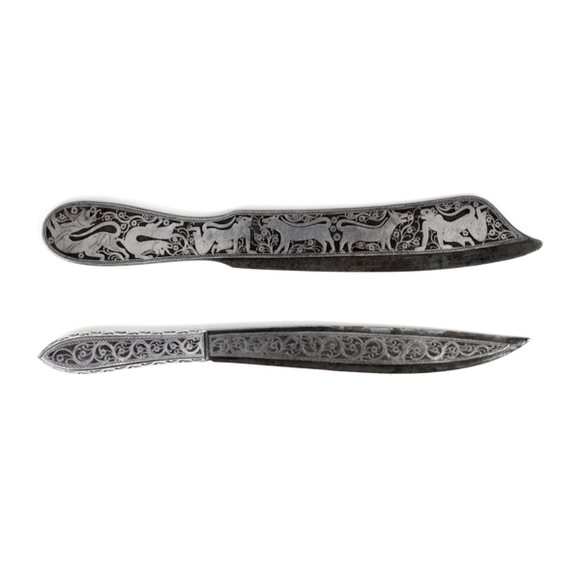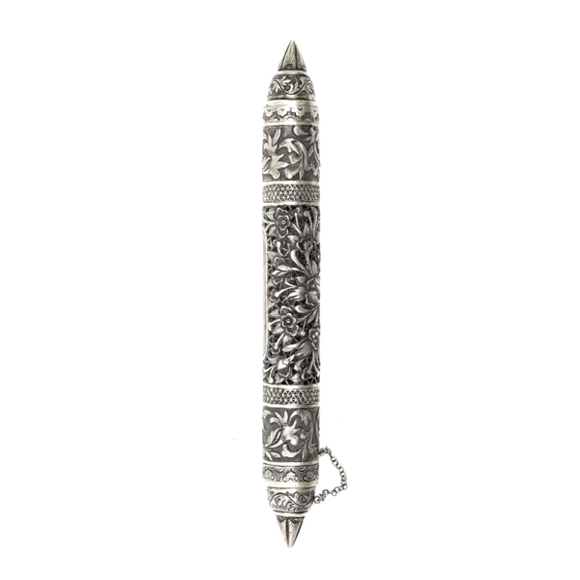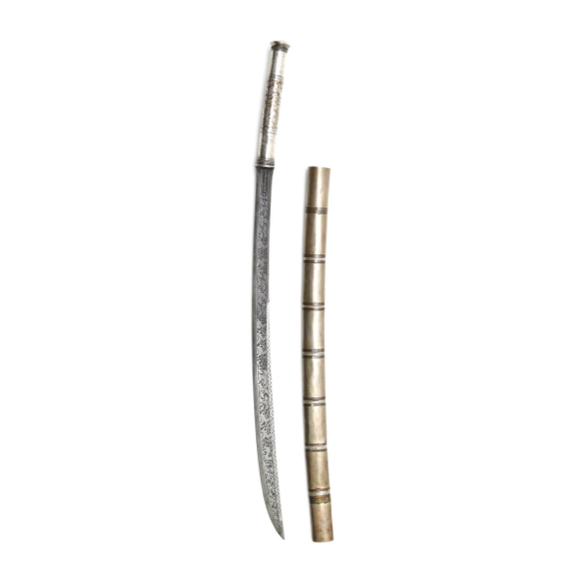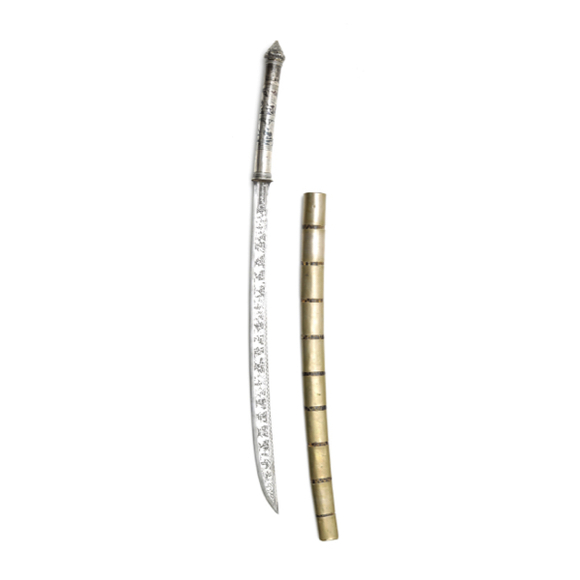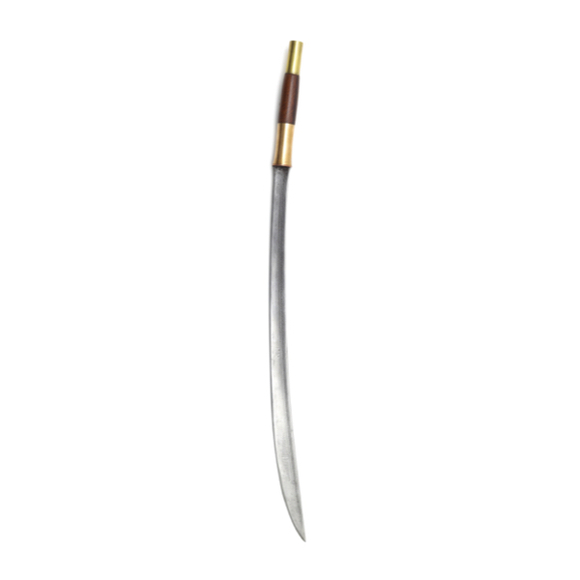Very rare set of Burmese knives from Mindan village.

84.6 cm
61.5 cm
Base 11 mm
Middle 6.5 mm
Near tip 4.5 mm
Base 28 mm
Middle 27 mm
Near tip 31.5 mm
801 grams
11.3 cm from hilt
Mindan village, Yamethin district, Myanmar (Burma)
Iron, steel, wood, silver, resin
Circa 1880 - 1910
Introduction
Mindan village in Yamethin district, just south of Mandalay, was known for making ornate dha with fine silver overlay:
The inlaid dha and dagger blades of Mindan near Yamèthin are well-known. The dhas are inlaid in gold, silver and brass.1
-Gazetteer of Upper Burma and the Shan states. 1901.
"Of the 26,221 workers and dependents shown in the census returns under the head of workers in iron and hardware, few can have been capable of executing anything more than the coarsest blacksmith's work. An exception must, however, be made in favour of the forgers of the inlaid knife-blades produced in Yamethin District, some of whose work is really meritorious." 2
-Imperial Gazzetteer of India, Provincial Series, Burma Vol 1. 1908.
The most thorough account on their work is Bell's monograph on Iron and Steel production in Burma:
"Another artistic development has its home in Mindan Village, Yamethin District, where every household depends mote or less on its smithy, though there are only a few professors of the particular art to be described, which consists of an inlay of silver wire upon an iron surface. The usual articles produced are ornamental dalwes or da-hmyaungs, scissors, ...
This industry is said to have had its origin five generations before Saya whose son Saya Pyo, the chief local artist, turned out the articles shown in the illustrations. The originator's name is forgotten, but the art is traditional, from father to son, each improving on his ancestors, as Saya Lan himself said:
"I was better than my father, and now my son, Maung Pyo, is better than I ever was." 3
-E.N. Bell, Rangoon, 1907.
When he wrote his monograph in 1907, the tradition was said to have started five generations before Saya. Assuming some 30 years for each generation, this puts the origin of the work in about the middle of the 18th century.
This example
A nice example with a strong and relatively heavy blade with a long back bevel that runs roughly two-thirds of the blade's length. The blade's center section is entirely crosshatched to receive its fine silver overlay, the background of the steel is blackened to make it stand out in bright contrast.
The designs are typical Burmese chu-pan scrollwork with on the right side: two figures, a tiger, and an elephant. On the left side are three figures and a tiger.
The long backedge is decorated with a zig-zag pattern of silver wire overlay.
Hilt
The hilt is covered with silver sheet with decorative silver wire braid at top and pommel ends. The mid section is made of iron with fine silver overlay of figures, probably portraying a story out of Burmese folklore.
Scabbard
Compared to the blade, the scabbard is quite humble as is often the case with this type of dha. (Especially when you compare them to the scabbards typically made by the neighboring Shan.) It has a wooden core with thick silver overlay in ten segments. Between the segments were zig zag wire inlays on resin, now mostly lost.
Conclusion
A fine dha that seems to be made in Mindan village. It has a strong, well-made blade with fine silver overlay in a sturdy, iron reinforced hilt. A nice dha that combines the ornate with the practical.
Notes
1. James George Scott, John Percy Hardiman; Gazetteer of Upper Burma and the Shan states, Part II, Vol III, 1901. Page 386.
2. Imperial Gazetteer of India, Provincial Series, Burma Vol 1. The Province; Mountains, Rivers, tribes, etc.; And the Arakan, Pegu, Irrawaddy, and Tenasserim Divisions. Superintendent of Government Printing, Calcutta. 1908. Page 79.
3. E.N. Bell I.C.S.; A Monograph on Iron and Steel Work in Burma. Rangoon, Superintendent, Government Printing Burma, 1907.



















Fine silver overlaid dha made in Mindan village, south of Mandalay, gained fame in the 19th…

